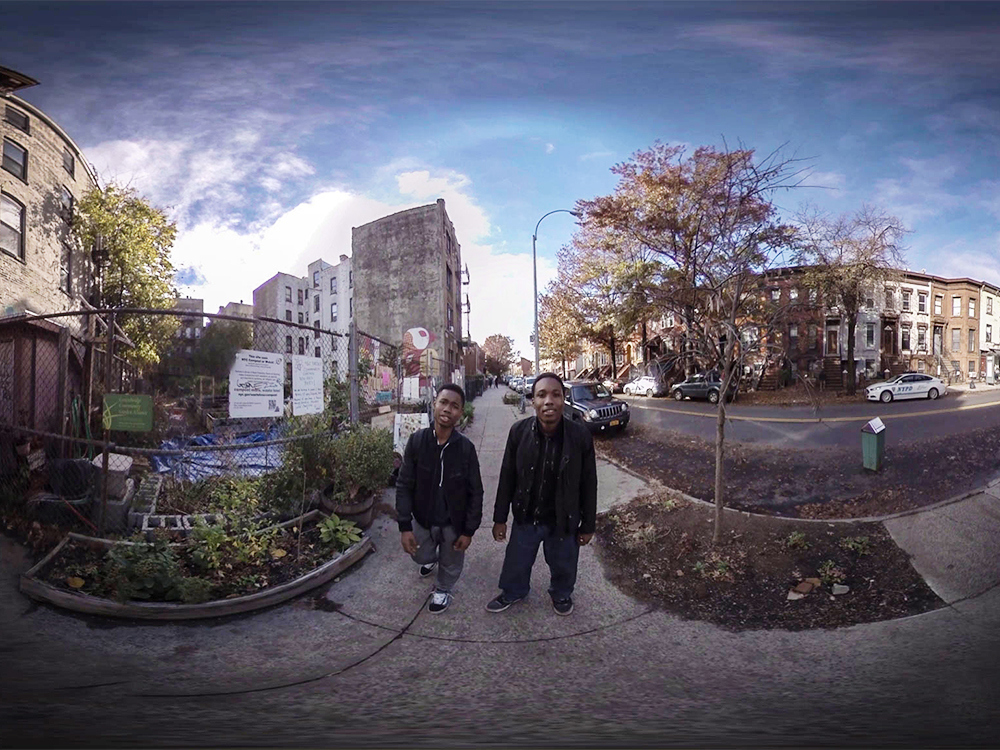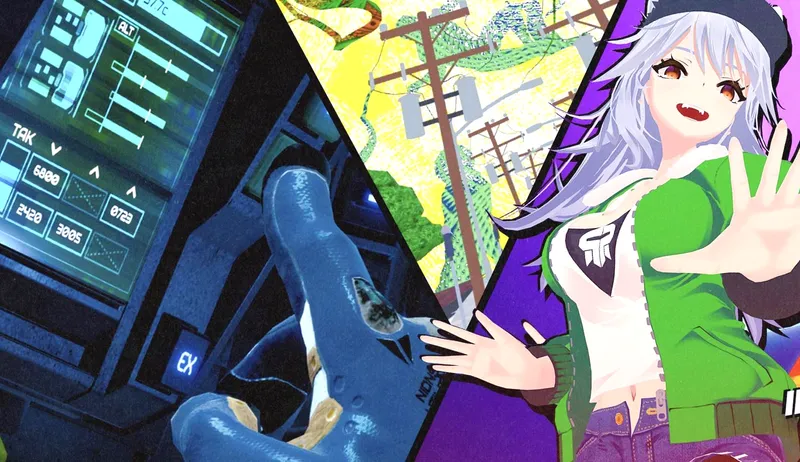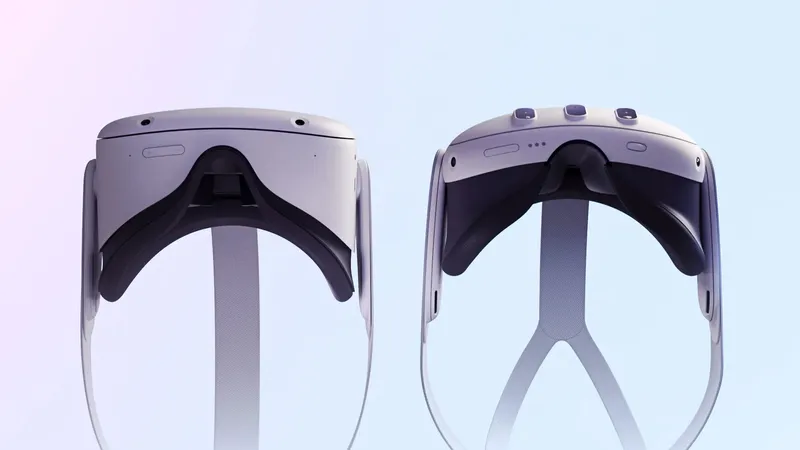The goal of virtual reality can be summed up in that one hyped, debated, ever-repeated word: immersion. The closer to real the simulated environment feels, the better the experience. New uses for this immersion seem to pop up almost daily. It’s being used to give football players a more accurate vantage point while reviewing films of plays, conduct market research for how people decide one product over another, has helped doctors perform live-saving surgeries and will soon be used to allow earthbound humans to explore the surface of Mars.
One of the greatest and most-talked about uses of VR’s multi-sensory immersion is its ability to evoke empathy. When it looks and sounds like you’re there, you’re likely to experience the same emotions as if it were real. Stories that evoke empathy don’t always give you the full picture, however. When hearing of a conflict, we often get more background from the person telling the story to us, leaving our view skewed. A equal glimpse of the issue from all parties helps us direct our empathy in the right direction.
Writer and director Rose Troche understands this. Her successful VR film series, Perspective, kicked off last year with The Party, which investigated experiences from a college party-turned-sexual assault. It’s a polarizing conflict. Having empathy for both sides is incredibly difficult, but it’s at the heart of understanding the whole story.
The stakes are even higher with the series’ second installment: The Misdemeanor. The short film, a Sundance favorite, focuses on the moral ambiguity of a police shooting. I spoke with Troche and producer Amy Lo about the film’s intent, the difficulties of filming in VR, and why it’s the best medium for this project.
The Q & A has been edited for clarity and brevity.
So far, both installments of the series deal with issues that ordinarily have people firmly on one side of the issue, without considering the other. But each side has a take on the story worth considering. How does filming in VR help capture this ambiguity better than traditional cinema?
Rose Troche: Doing this series in VR is everything, because it puts you in a first person perspective. Traditional cinema can’t put you in someone’s body. So it’s taking advantage of the technology. I wouldn’t tell these stories in 2D, because it wouldn’t have the same impact. I really want the conversations to continue on these subjects. They’ve been on my mind a lot. I wasn’t just trying to pick the most hot button topics.
And it’s a much more immersive experience. You could watch The Misdemeanor in 2D, with all four perspectives, and you’d think, “Am I watching an episode of Law and Order?” But there’s something different about being in someone’s body. Doing the sound mix for breathing or making the voice sound the same as your own voice resonating in your head. You have to think about these things. What is it like to be there? What is the ambiguity of being a witness? Just because you’re there doesn’t mean you know exactly what happened. In three of the perspectives, you don’t see the officer coming up. It’s looking at how faulty it is to be a witness.
Both Perspective films have been received really well, but have you gotten any negative attention from people who think you’re sympathizing with the wrong side?
Troche: Not really. Both topics are so difficult. Sadly, I think most of us can relate to sexual assault in some way or another, unlike police brutality. Most of us aren’t repeatedly stopped by police and feel like, “Here we go again.” Both of the young men in the film go into that situation with a deep breath and think, “Okay. What’s it going to be this time?” And that’s how I wrote and directed it. I did a lot of research and talked to young people and officers who work in cities.
A few people have told me that they think The Misdemeanor is too soft on the officers. But the pieces are there to say, “Can we speak about this like human beings who make mistakes?” And I know it can be oversimplified. There’s a history of violence and a history of police brutality. I’m painfully aware of this. So I specifically wrote the pieces with both sides making mistakes, even though shooting an unarmed person is obviously more heinous. Officers are allowed to use twice as much force as what is used against them, but how do you quantify that? It’s totally arbitrary. That really intrigued me.
I wanted it as realistic as possible, and VR makes you really feel like that individual. As this young man, you’re going, “Why are you harassing me?” As the officer you’re going, “Why won’t you frickin’ comply? I’m asking you to do something simple. Put your bag down. Stop. Let me look through it.” Therein is the issue, where it escalates.
Amy Lo: That first film, The Party, has distribution directly on college campuses, which I think is the right context and audience. Much of the purpose of Perspective is to provoke discussion. So if people say negative things, I think it’s less of a criticism of the piece, but more how it affected them. They want to talk about the experience and how they felt.
Are there other filmmakers who focus on the ambiguity of issues like these?
Troche: I think a lot are, specifically with VR. They’re using it as a source of empathy. Look at the U.N. pieces. They’re moving people to feel something more than they would with an article or photograph.
There’s that famous photo during the Vietnam War with that woman running away after being sprayed with napalm. It changed the face of photojournalism. And there’s so much on top of that that we’re just numb to. But we want to feel, and this is a new technology to allow us that.
People are treating PTSD and doing end of life care with it, too. I have to say, if I was dying in a hospital and I could be somewhere else by strapping on a viewer, I totally would. There are all these ways people are changing things through this technology.
Has anyone treated your VR films like they’re not truly films, or more of a niche thing?
Troche: Oh yeah, it’s been so different. Some people say there is no cinema involved. But I think there needs to be a different language for what this thing is. There’s a gigantic learning curve, and traditional cinema can get in the way of making amazing VR pieces. You have to enter it as a new thing and just give yourself up to it and learn.
Casting, writing and directing don’t work the same way with VR. You can’t control people’s eyes. Some people want to put everything in one place, but I’m excited to use the full 360 experience. It’s really an amazing opportunity, and the more you tie yourself to traditional cinema, the more you’re missing out on.
Lo: I think normal capture will be sufficient for a lot of applications, but there are some distinctions that make room much more. There’s a New Yorker interview with Werner Herzog discussing why stories work in condensed form. It’s because of the condensation. You don’t film a road trip minute by minute, because that’s not interesting. Doing things that way only really works as novelty simulation and feels like a demo. Nothing really interesting is happening. We need to really figure out the craft of VR filmmaking to progress it.
A big reason VR isn’t picking up more with audiences is that it’s not very accessible yet. Will there be VR theaters? Or only downloads once more people have headsets?
Troche: I think there will be more download platforms, like Vrse or Jaunt, probably with an option to subscribe once there’s more content. But right now, people aren’t buying headsets because there’s not enough amazing content. Without good content, it’s just tech. We need good storytelling and things people are really going to want to experience. It’s important that we use VR’s strengths and not just treat it like television.
Too many people are making things where, even though you can look around, you end up focusing straight ahead. Who’s going to want to strap this thing to their face for that? We need stories that work specifically well in this medium. I’m hoping by 2017 companies will have their own phone viewers, like the Gear. That way it’s just this extra $80 thing, and people will want to explore it.
Lo: It will probably be an at-home thing with social capabilities. Companies like AltspaceVR are allowing you to interact with people in the virtual environment. Because it’s really a solitary experience, even with people around you. There could be networked interactions within VR, using avatars.
What are some challenges of directing a 360 film?
Troche: There’s no place to hide a crew. In the film I was a spectator, because it’s the only way I could get close to the camera. You have to rehearse everything in a more in-depth way than you do for traditional films.
In the neighborhood we filmed in, the things we were filming are real concerns. We had a skeleton crew, and since the camera is so discreet, people thought it was real. When people saw this cop stopping two young black men, they called 911. Cops showed up to investigate and didn’t quite understand what was happening. A lot of tensions had to be subdued.
— Article contributed by Dylan Eller


























